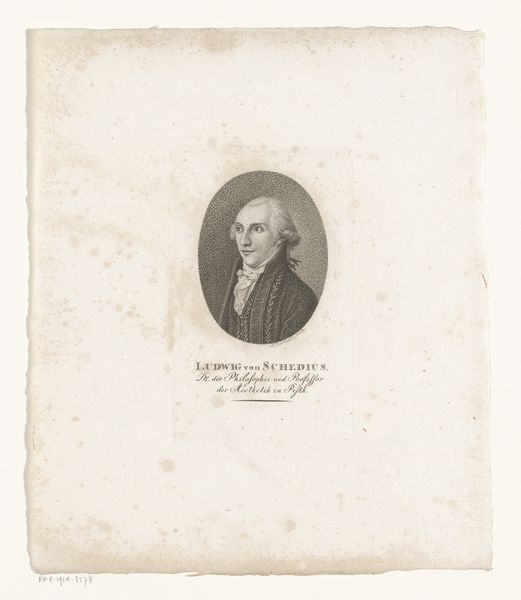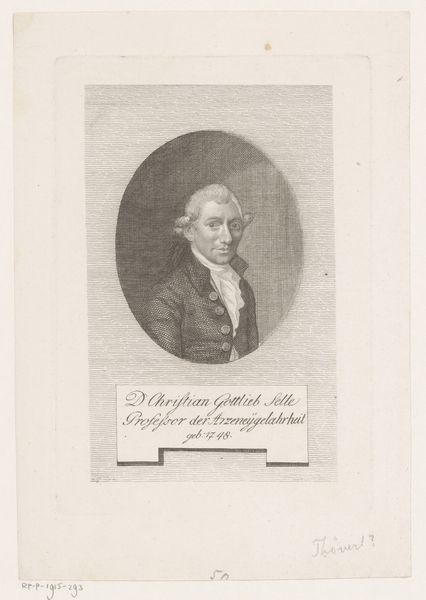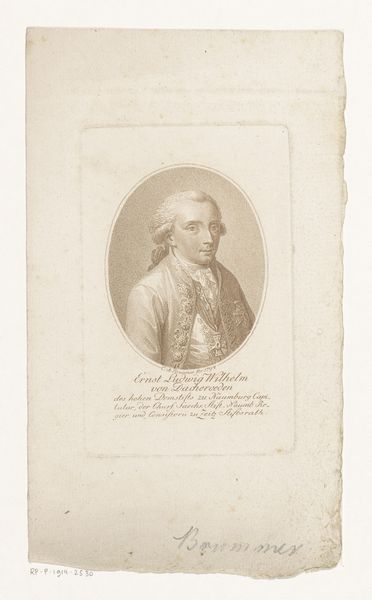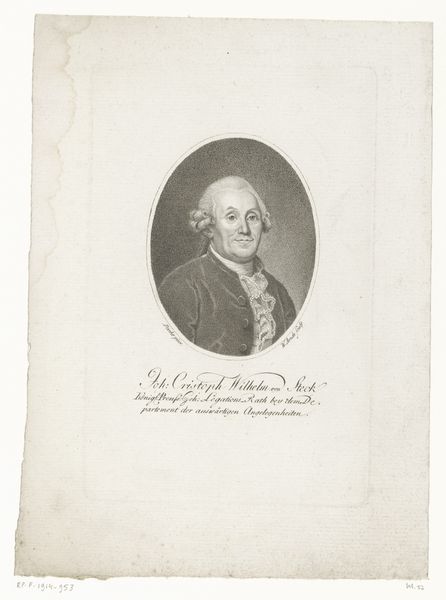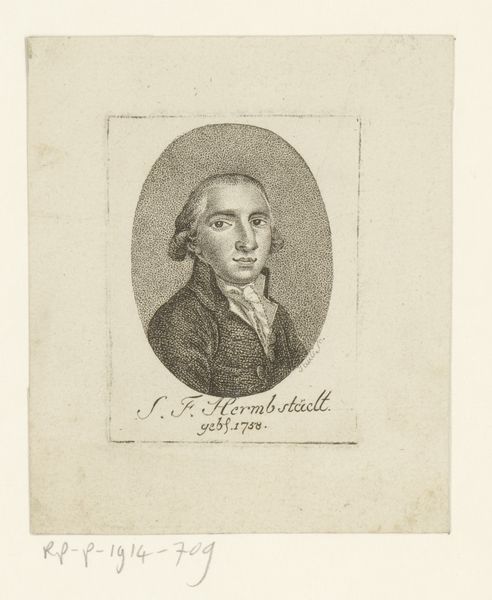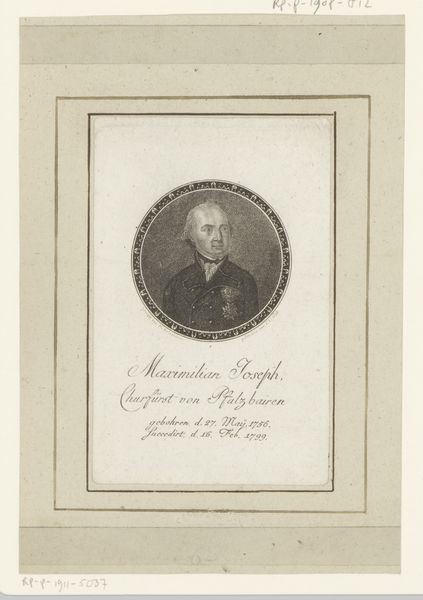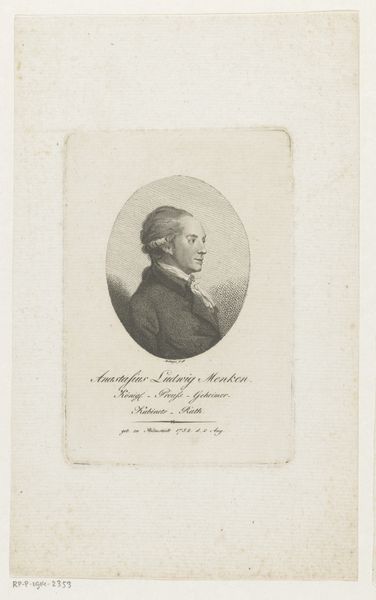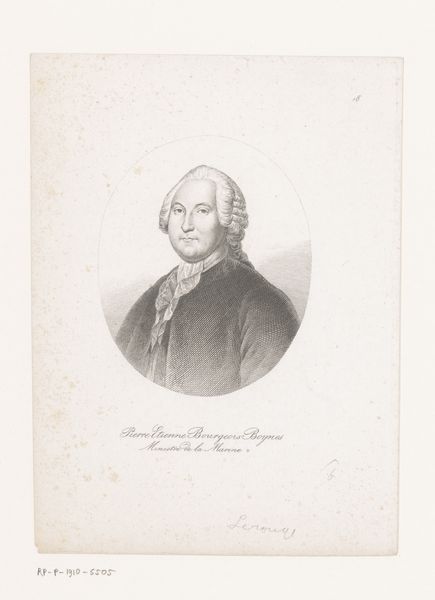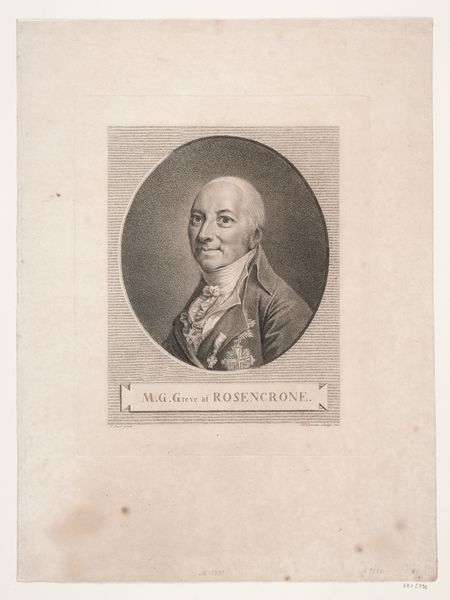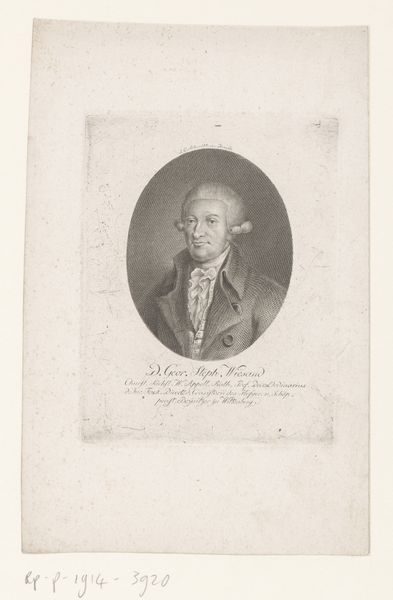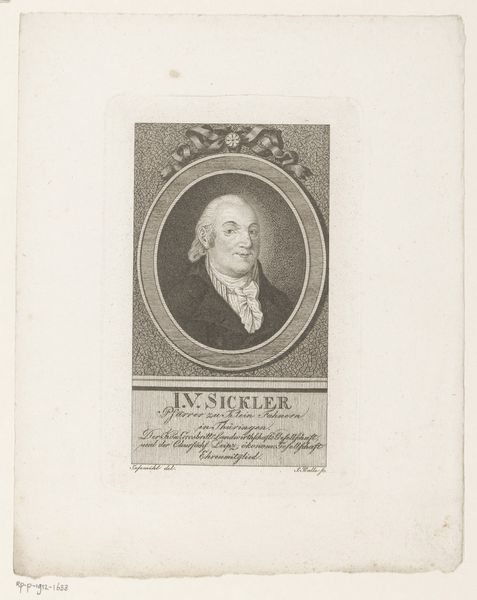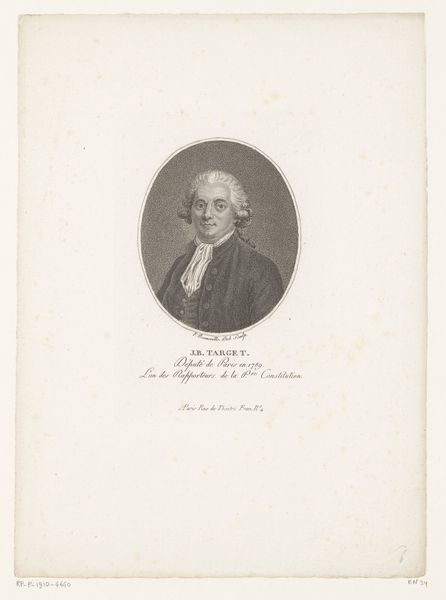
#
portrait
#
neoclacissism
# print
Dimensions: height 152 mm, width 102 mm
Copyright: Rijks Museum: Open Domain
Editor: Here we have Friedrich Wilhelm Bollinger's print, "Portrait of Johann Georg August Galletti," created in 1799. It feels very classical, almost austere, with that perfectly centered oval portrait. What catches your eye in this piece? Curator: I am immediately drawn to the meticulousness of the engraving. Note the precision of line and form used to create tonal variation and texture. Consider how the engraver uses hatching and stippling to define Galletti's face and clothing. Editor: It’s interesting how such fine lines can create such a sense of volume. Curator: Precisely. It also interesting is the contrast in visual weight between the portrait and the inscription below, wouldn’t you agree? The inscription appears secondary in terms of visual hierarchy; thus, we should focus our interpretation upon the formal qualities of the portrait itself, considering it as a self-contained composition. Editor: I see what you mean, the typography seems functional. Focusing on the oval then, what is the function of placing a realistic depiction inside this stylized shape? Curator: It directs the gaze. The severe, contained format intensifies our focus on the facial expression, the play of light across the face. The neutral backdrop further isolates the subject, encouraging us to scrutinize every detail of the construction of the face and garments. Editor: I guess I hadn't considered how the simplest artistic choices really guide our understanding of the artwork. Thanks for the formal deep dive! Curator: It’s been a pleasure exploring the forms of this print with you.
Comments
No comments
Be the first to comment and join the conversation on the ultimate creative platform.

